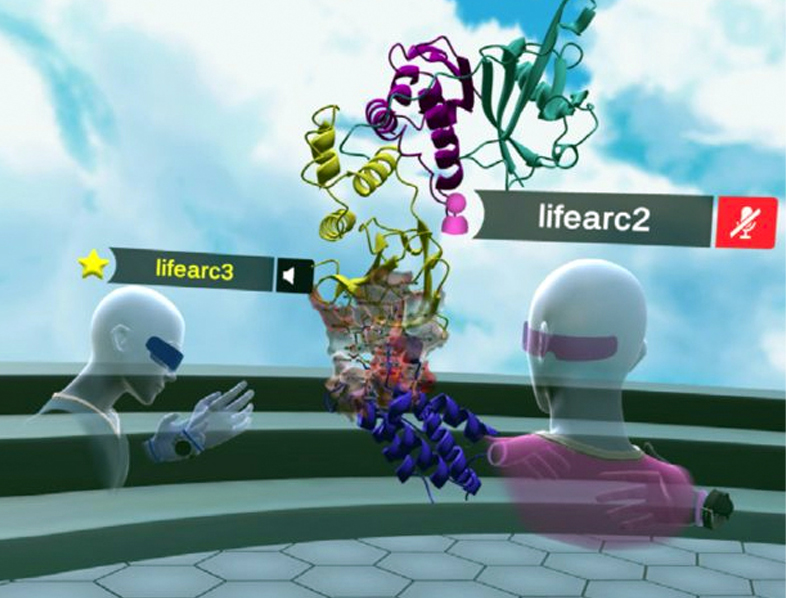A project by an industrial placement student led to Virtual Reality becoming a powerful tool for drug discovery
Technology has come a long way since 1991, when David Pardoe was building a virtual reality (VR) headset out of an old motorcycle helmet and a couple of mini-TVs. It weighed 9 kilograms and – because it was so heavy – was propped on a broomstick to spare the user’s neck. Today, you can buy a light, sophisticated VR headset online for a few hundred pounds. You can even run rudimentary augmented reality (AR) applications on your phone.
Different insights
The trick, of course, is knowing what to do with all this kit, which is where Dr Pardoe and his team have been experimenting.
“We are interested in exploring data and information in new ways that give us insights into relationships that we just can’t see on a conventional screen,” says Dr Pardoe, Associate Director of Technology Development. “Looking at molecules has been a relevant place for us to start.”
While computer-assisted drug design has been around for many years, it only allows visualisation in two dimensions. Virtual reality, on the other hand, allows scientists to ‘stand’ anywhere inside or outside of a molecule, giving new insights into ways that a candidate drug might interact with it. It is also possible for two or more scientists to share the same experience in real time, even if they are working at locations thousands of miles apart, and to broadcast the session to a live audience.
Student know-how
The ‘immersive analytics’ project, as the team has called it, was put into action by Mae, a student intern at LifeArc. What started as an assignment to research the current state of play in VR, ended up highlighting important new opportunities for research scientists at the Stevenage labs. It’s an example of how great ideas can come to life at LifeArc if given the right support.
A team of six LifeArc scientists with expertise in chemistry, biology, computational chemistry, data engineering and IT are working on the project, as well as 13 experts from Nanome Inc, LifeArc’s externalisation partner. The entire CTD team is also on hand to test their work and advise on the appropriate research tools.
“We are perfectly aligned with leading pioneers in this field in terms of our vision and purpose to democratise computational tools for all scientists, with the goal of improving outcomes for patients and shortening the time to impact,” says Dr Pardoe.
VR-based discovery tools
The project has been running since October 2019 and is already making an impact. The team is developing further tools to enhance this platform and provide broader applicability, with the aim of having a full suite of VR-based drug discovery tools ready to go. This information will enable researchers to better understand data, the relationship between clinical and biological information, and disease mechanisms.
Starting at the small molecular drug discovery level is only the start of the team’s vision. The platform could be further enhanced to view surface antigens on, for example, Coronavirus or tumour cells, to accelerate the pace at which new discoveries are translated into effective therapies for patients.
“VR, augmented and mixed reality technologies have the potential to be used in visualising cellular structures and viruses, or even new ways to show three-dimensional perspective of data and relationships – allowing investigators to tease out complex relationships,” explains Dr Pardoe. “That is where we go next.”
Industrial placement students at LifeArc
LifeArc’s student placement scheme is a unique opportunity to get involved in our exciting project work and be part of a team that is working across a number of areas of the drug discovery process. If you are a sciences undergraduate and are interested in applying, find out more about our industrial placements.

